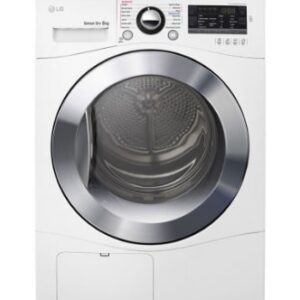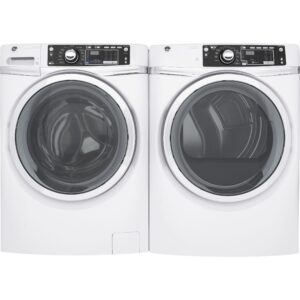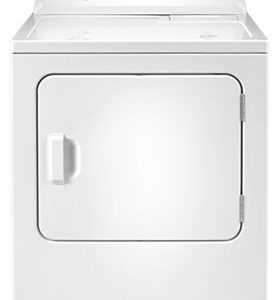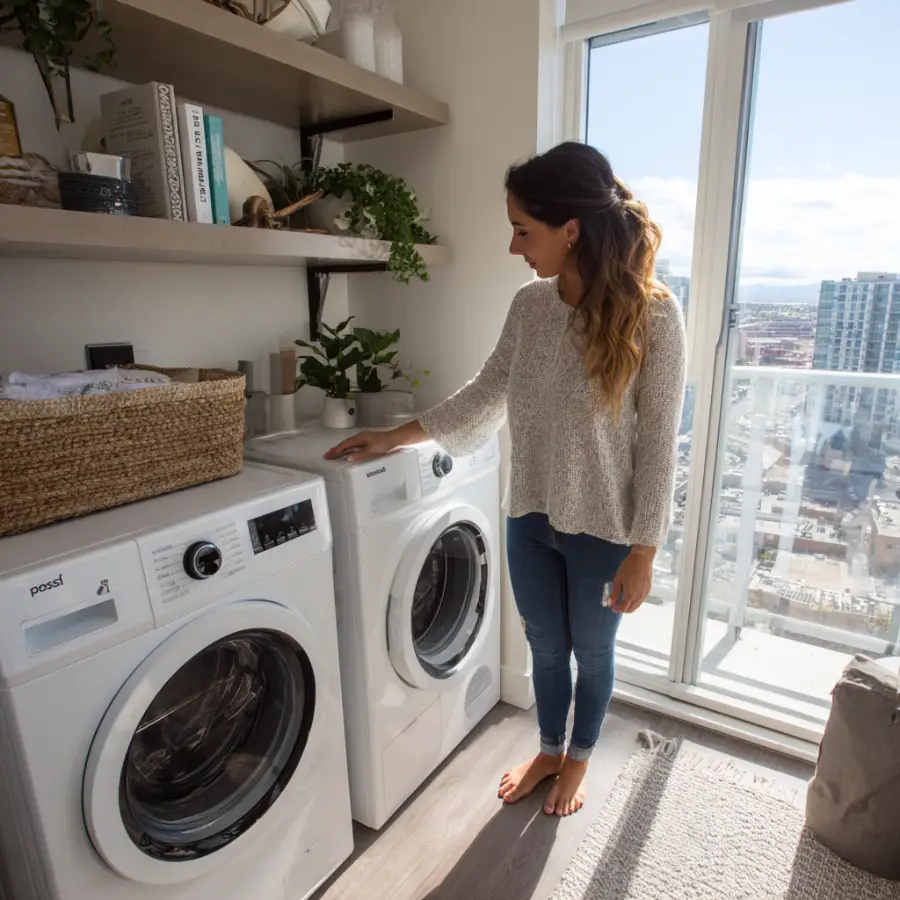Navigating the world of washer and dryer pricing can be a daunting task, especially for those who are unfamiliar with the various factors that influence the cost. Whether you’re a homeowner looking to upgrade your laundry setup or a renter searching for a convenient solution, understanding the fair price range for these essential appliances is crucial. In this comprehensive guide, we’ll delve into the average cost of washer and dryer sets, key considerations like washer and dryer configuration, and insider tips to help you make an informed decision when it comes to renting or purchasing laundry appliances.
Average Washer and Dryer Prices
The average washer price and dryer cost can vary significantly, depending on factors such as the configuration, washing machine capacity, features, and brand. On average, you can expect to pay between $1,000 and $2,300 for a complete washer and dryer set. Breaking it down further:
- Washing machines typically range from $700 to $1,300, with an average washing machine price around $1,000.
- Dryers generally cost between $800 and $1,200, with factors like dryer size, dryer depth, and dryer capacity influencing the price.
- Washer-dryer combo units fall within the $1,200 to $1,700 range, offering a space-saving built-in laundry solution.
It’s important to note that these price ranges are for new, standalone appliances. If you’re considering a more compact or specialized setup, such as a stackable laundry unit or a large capacity dryer, the costs can vary accordingly.
Factors Influencing Washer and Dryer Prices
When determining a fair price for a washer and dryer, several factors come into play. Understanding these elements can help you navigate the washer and dryer industry and make an informed decision.
Configuration
The washer and dryer configuration can significantly impact the overall cost. Standalone, side-by-side models tend to be the most affordable, while stackable or all-in-one washer-dryer combos may come with a higher price tag.
Capacity
The washing machine capacity and dryer capacity are crucial factors. Larger capacity machines, often suitable for families or those with frequent laundry needs, generally cost more than their compact counterparts. A dryer capacity chart can help you determine the ideal size for your needs.
Loading Type
Front-loading washers are typically more expensive than top-loading models, but they often offer more efficient and gentler cleaning cycles.
Fuel Type
Gas dryers usually cost around $90 to $100 more than their electric dryer counterparts, due to the additional installation requirements.
Features and Efficiency
Appliances with advanced features, such as Wi-Fi connectivity, steam drying, moisture sensors, or energy-efficient ratings, tend to have a higher price tag. Design options and color choices can also influence the cost.
Brand and Warranty
Reputable brands with longer product warranties may charge a premium, but they often offer enhanced durability and customer support.
Accessories and Installation
Don’t forget to factor in the cost of any necessary accessories, like laundry pedestals or drying racks, as well as the installation considerations and fees, which can range from $100 to $300.
Renting vs. Buying: Which is the Better Option?
When it comes to the decision between renting and buying a washer and dryer, there are pros and cons to consider.
Renting
Renting a washer and dryer can be a convenient option, especially for those with limited budgets or who are unsure of their long-term living situation. Washer and dryer rental prices typically range from $30 to $80 per month, depending on the appliance type and features. The main advantages of renting include:
- Lower upfront investment
- Convenience and flexibility to upgrade or change appliances as needed
- Maintenance and repair costs covered by the rental company
Buying
Purchasing laundry appliances can be a more cost-effective solution in the long run, particularly if you plan to stay in your home for several years. The initial cost comparison may be higher, but you’ll have the freedom to choose the perfect appliances for your needs and potentially save on utility bills with energy-efficient models. The key benefits of buying include:
- Ownership and control over your appliances
- Potential for long-term savings
- Ability to customize your laundry setup
Maximizing Your Washer and Dryer Investment
Regardless of whether you choose to rent or buy, there are several strategies you can employ to ensure you get the most value from your washer and dryer investment.
Research and Compare
Thoroughly research the market, compare prices, and read reviews to find the best deals and high-quality appliances that fit your budget and needs.
Consider Energy Efficiency
Look for ENERGY STAR-certified models, which can help you save on utility costs and reduce your environmental impact.
Prioritize Maintenance
Proper washer and dryer maintenance, such as cleaning the dryer’s lint trap, using a stainless steel drum, and keeping the vent duct clear, can extend the lifespan of your appliances.
Explore Rental Options
If buying isn’t feasible, consider renting from a reputable provider like A&A Appliance Leasing, which offers flexible terms and convenient delivery.
Conclusion
Determining a fair price for a washer and dryer involves considering a multitude of factors, from the configuration and appliance capacity to the features and brand. By understanding the average washer and dryer cost ranges, key pricing influences, and the long-term financial considerations of renting versus buying, you can make an informed decision that aligns with your budget and laundry needs. Remember, whether you choose to rent or purchase, prioritizing energy efficiency, proper maintenance, and thorough research can help you maximize the value of your investment and enjoy a seamless, cost-effective laundry experience.
FAQs
What is the average cost to run a washer and dryer?
The average cost to run a washer and dryer is $120 to $240 per year, depending on the appliance efficiency, load size, the unit’s age, and local utility rates. Washers typically use 50 to 400 kWh of electricity per year, while dryers consume 250 to 1,000 kWh annually.
What is the lifespan of a washer and dryer?
The average lifespan of a washer and dryer is 8 to 13 years, depending on the brand and usage frequency. Proper maintenance, such as keeping the machines level, avoiding overloading, and cleaning the dryer’s lint trap, can help extend the life of your appliances.
Are combo washer-dryers any good?
Combo washer-dryers can be a good option for those with limited space, as they combine both washing and drying functions in a single unit. However, they are generally less efficient at drying clothes compared to a standalone dryer. The tradeoff is the space-saving convenience they provide.
How do I prepare my home for washer and dryer installation?
Before the installation, ensure you have the necessary connections in place, such as water lines, a drain, electricity, and a dryer vent. It’s also a good idea to clear the delivery path and have the installation area ready for the technicians. Asking the installer for specific guidance on how to prepare can also help ensure a smooth and efficient installation process.












